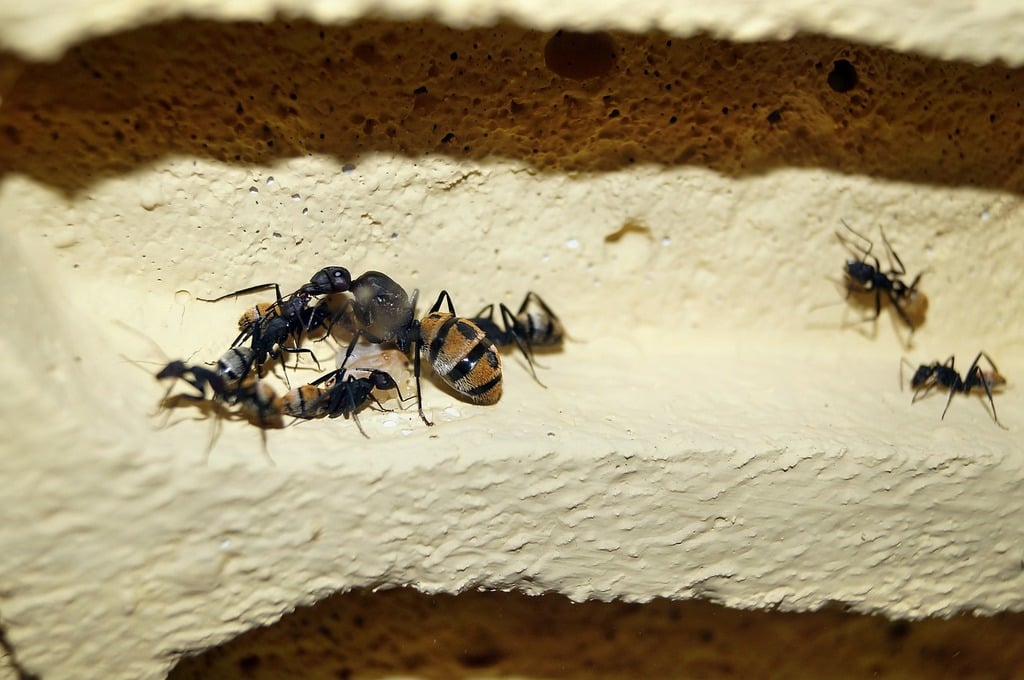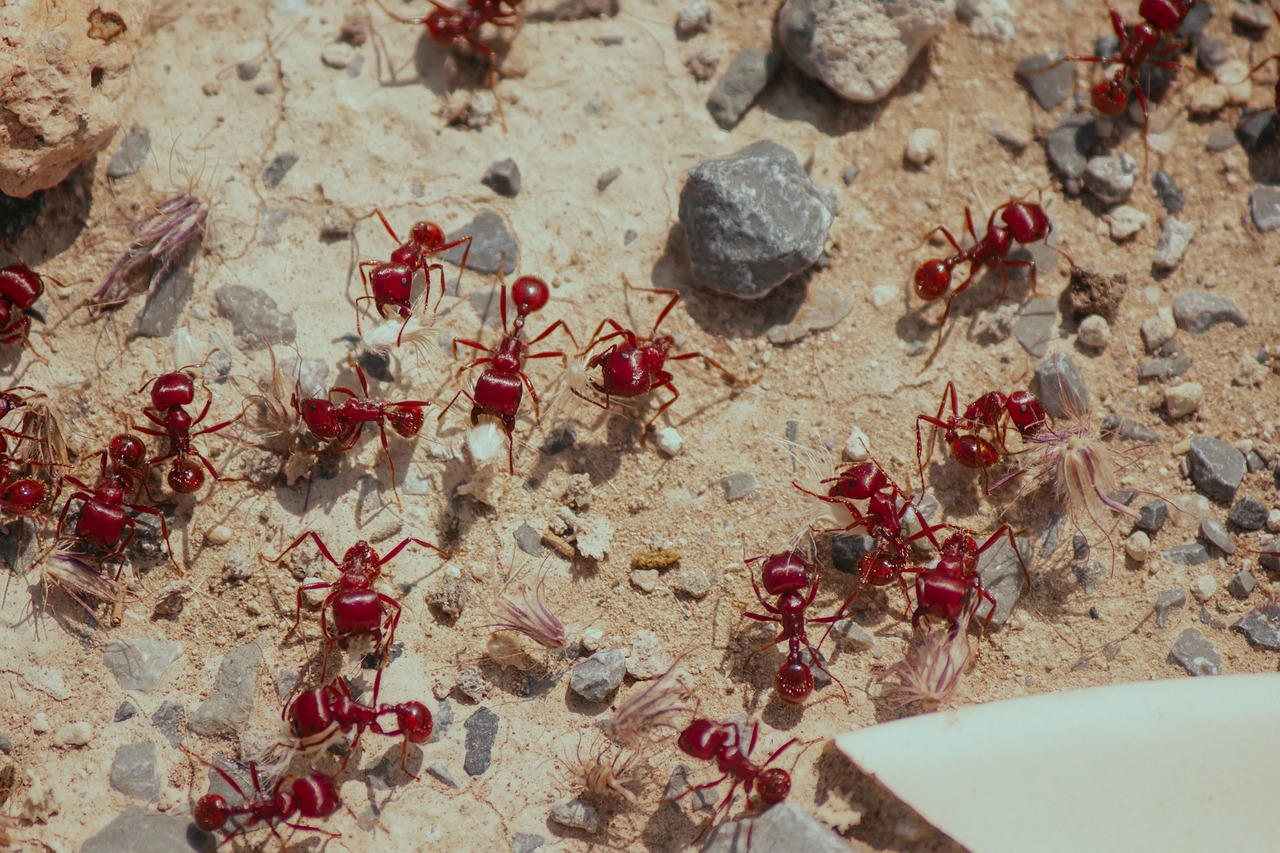Ants are tiny pests with three major body parts: the head, thorax, and abdomen. They typically range in color from black to brown and red. Ants have six legs, elbowed antennae, and strong mandibles (lower jaws) for carrying food and defending their colony.

 To get rid of ants, you need to follow a few steps. First, find out where the ants are coming from and what type of ants they are. Clean your home really well to remove any food that might attract them. You can use natural solutions like vinegar or lemon juice to confuse their trails, and place ant baits that the ants will carry back to their nest to kill the colony.
While you can do this yourself, hiring a professional pest exterminator is often a better option. They have the right tools and knowledge to get rid of ants quickly and keep them from returning.
To get rid of ants, you need to follow a few steps. First, find out where the ants are coming from and what type of ants they are. Clean your home really well to remove any food that might attract them. You can use natural solutions like vinegar or lemon juice to confuse their trails, and place ant baits that the ants will carry back to their nest to kill the colony.
While you can do this yourself, hiring a professional pest exterminator is often a better option. They have the right tools and knowledge to get rid of ants quickly and keep them from returning.
Key Features of Ants
- Head: Contains mandibles for carrying food and fighting.
- Thorax: The midsection where the legs and wings (if present) are attached.
- Abdomen: The rear section that contains vital organs.
Types of Ants
- Flying Ants: These are male ants and are identified through their wings, often seen during mating seasons.
- Soldier Ants: Larger ants with stronger mandibles, responsible for colony defense.
- Carpenter Ants: Known for nesting in wood, they are larger and often black or dark brown.
Identifying a Queen Ant
The queen ant is the largest member of an ant colony and can be identified by her size and unique features. She has a larger thorax compared to worker ants, which once supported wings used during the mating flight. The average size of a queen can measure from 12 mm to 50 mm in length.
Key Features of a Queen Ant
- Size: Significantly larger than other ants in the colony ranging from half an inch to two and a half inches.
- Wings: Queens initially have wings, which they shed after mating.
- Thorax: Larger and more pronounced due to wing muscles.
Ant Behavior and Lifespan
Ants are social insects that live in colonies. They exhibit fascinating behaviors like forming complex structures and engaging in teamwork. Worker ants live about two to three years, while the queen can survive up to 15 years.How Does Queen Ant Mate?
Queen ant mates during a special event called the nuptial flight. This is when both young queen ants and male ants, called drones, leave their colonies and fly into the air in large groups. While flying, the males find and mate with the queens. After mating, the males usually die because their job is done. The mated queens then land, lose their wings, and look for a good spot to start a new colony. Once they find a place, they begin laying eggs, which will grow into the workers and soldiers of the new colony.Ant Colony After Queen Ant’s Death?
When a queen ant dies, the colony faces big changes. The queen is the only one who lays eggs, so without her, no new ants can be born. The existing worker ants will keep doing their jobs for a while, but as they get older and die, there won’t be any new ants to replace them. This means the colony will gradually shrink and weaken. In some ant species, if there’s another queen, the colony can continue. But if there’s no replacement, the colony will eventually die out because it can’t grow anymore.How to Get Rid of an Ant Infestation?
 To get rid of ants, you need to follow a few steps. First, find out where the ants are coming from and what type of ants they are. Clean your home really well to remove any food that might attract them. You can use natural solutions like vinegar or lemon juice to confuse their trails, and place ant baits that the ants will carry back to their nest to kill the colony.
While you can do this yourself, hiring a professional pest exterminator is often a better option. They have the right tools and knowledge to get rid of ants quickly and keep them from returning.
To get rid of ants, you need to follow a few steps. First, find out where the ants are coming from and what type of ants they are. Clean your home really well to remove any food that might attract them. You can use natural solutions like vinegar or lemon juice to confuse their trails, and place ant baits that the ants will carry back to their nest to kill the colony.
While you can do this yourself, hiring a professional pest exterminator is often a better option. They have the right tools and knowledge to get rid of ants quickly and keep them from returning.




